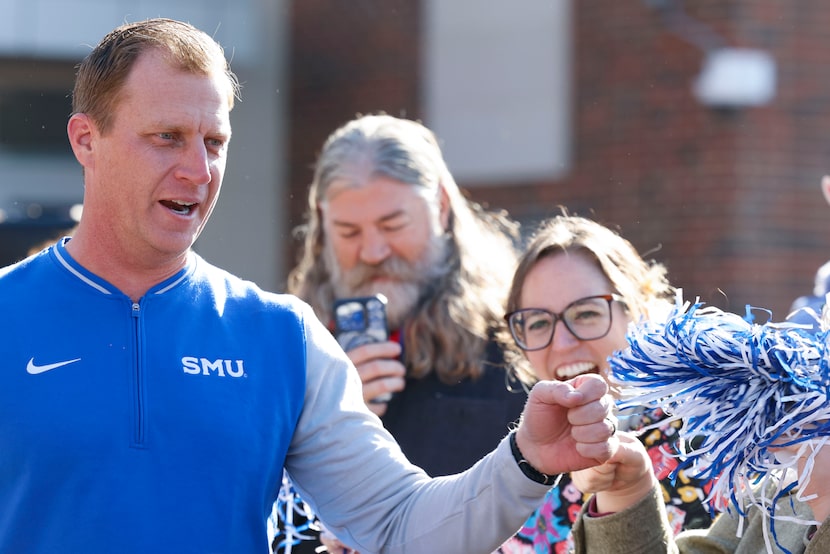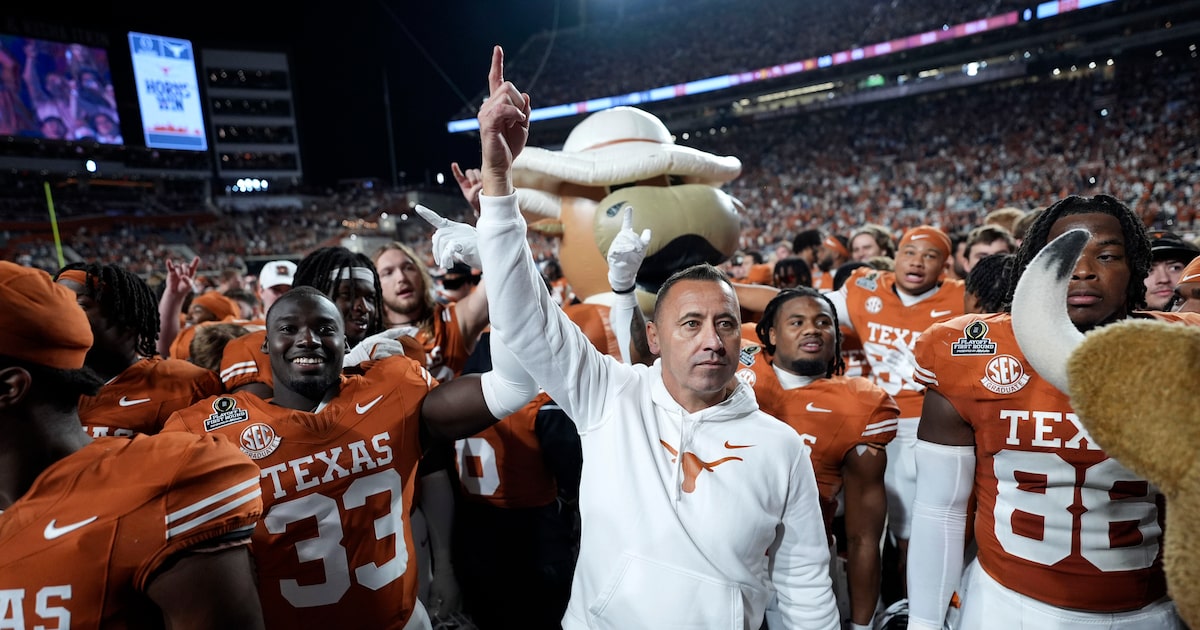SAN ANTONIO — The revenue-sharing era in college sports is less than a month old, and football coaches already have mixed feelings.
The $2.8 billion antitrust settlement that paved the way for schools to pay their athletes beginning July 1 resolved three separate federal antitrust lawsuits alleging the NCAA was limiting the earning power of college athletes.
Under the House vs. NCAA settlement, schools can pay athletes up to a set cap, starting at $20.5 million per school in the 2025-26 academic year, in addition to offering scholarships, NIL deals and other benefits athletes already receive. That number is expected to increase by roughly 4% each year, reaching an estimated $32.9 million by 2034-35.
Texas head coach Steve Sarkisian said he’s wary of being the first to cross the line.
Texas College Sports
“Somewhere down the road, I don’t know if it is tomorrow, next week, next year, someone is going to get punished for going over the cap,” he said Monday at the Texas High School Coaching Association’s annual convention.
Related:How Texas colleges are handling the House settlement, preparing to pay players directly
SMU head coach Rhett Lashlee said he’s still trying to understand how the model will be implemented and monitored.
“I have 100% confidence that people will circumvent the cap and break rules, because they’ve been doing it for decades,” he said.
 SMU head coach Rhett Lashlee greets the fans during a send-off party for the football team ahead of the ACC Championship, on Friday, Dec. 6, 2024, at Gerald J. Ford Stadium in Dallas. (Shafkat Anowar / Staff Photographer)
SMU head coach Rhett Lashlee greets the fans during a send-off party for the football team ahead of the ACC Championship, on Friday, Dec. 6, 2024, at Gerald J. Ford Stadium in Dallas. (Shafkat Anowar / Staff Photographer)
Since 2021, athletes have been able to earn money through name, image and likeness deals with third-party companies and boosters. Donor-led collectives funneled millions into unofficial salaries — mostly for top football and basketball players — without the schools directly paying athletes.
The settlement created an organization, the College Sports Commission, to enforce the cap and regulate athlete compensation. Any third-party deal worth more than $600 must be sent to a clearinghouse called NIL Go, run by the consulting firm Deloitte, which will seek to regulate the market and prevent schools from circumventing the cap through external deals.
It’s unclear how the commission plans to penalize rule breakers. Tech coach Joey McGuire said he believes schools should forfeit scholarships if they exceed the cap.
“I have faith that people are always gonna try and look for loopholes,” the former Cedar Hill coach said. “The more we can close those and play on a level field when it comes to revenue sharing, the better it’ll be for the sport.”
Related:THSCA is pushing for legislation to protect recruits from being manipulated by agents
Relying on well-funded NIL collectives allowed schools to spend as much as $40 million on their rosters, according to reports. Texas, Texas Tech and Texas A&M were among the top 10 spenders in college football, according to an On3 poll, with the Longhorns topping the list.
Under the settlement, schools in power conferences and others that opt in to revenue sharing could be forced into difficult decisions about how to disburse their $20.5 million.
“If you maximize the cap based on the percentages, you’re somewhere in that 13 to 16 [million dollar] range for football,” Lashlee said. “You might not be the highest, but you’re in the range. That’s where the strategy comes in, if everybody’s buying in.”
Some schools may adopt NFL-like salary structures, devoting larger shares of the cap to the high-priority quarterback, left tackle and pass rusher positions.
Mansfield Lake Ridge offensive tackle Felix Ojo, one of McGuire’s pledges at Texas Tech, signed a fully guaranteed three-year, $5.1 million deal, according to Rashad Phillips of Prestige Management.
“If I’ve allotted however many million dollars to that room, how I use that money to one player or 10 players, that’s on me,” McGuire said.
Staff writer Lia Assimakopoulos contributed to this story.
